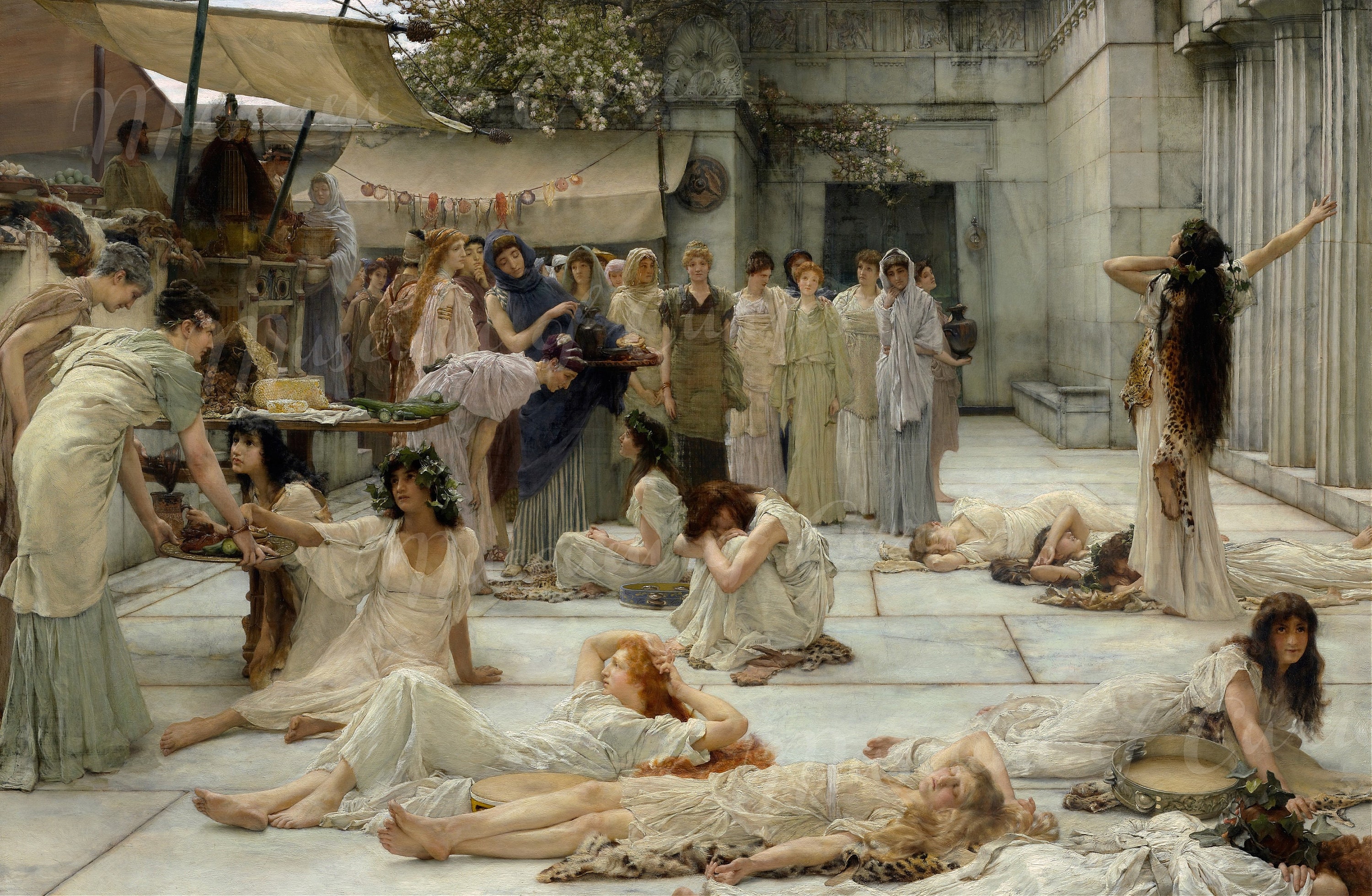

The Bloomsbury critic Roger Fry famously dubbed Alma-Tadema’s paintings “highly scented soap,” which is both offhand and astute. It is this gleam that most beguiles in Alma-Tadema: At Home with Antiquity, an expansive survey of the Victorian academic artist at Holland Park’s Leighton House. Although the painting contains more than a dozen figures – including the lusciously attired pharaoh’s daughter, slaves of both genders and the sainted child itself – what really draws the eye is that celestial glow, an alluring luminosity that, although a world apart in technique, matches the gleam of the impressionists. The sky is the most palpable presence in Lawrence Alma-Tadema’s (1836-1912) The Finding of Moses (1904), a rose-blue haze that emanates from the far-left corner of the canvas and intermingles with the milky sea, its wispy ethereality contrasted with a sharply defined thicket of delphiniums. The Roses of Heliogabalus, 1888 (detail).

Alma-Tadema: At Home in Antiquity A capacious retrospective of the long-neglected Victorian academician uncovers a master of the sensuous with a surprising knack for experimentation


 0 kommentar(er)
0 kommentar(er)
